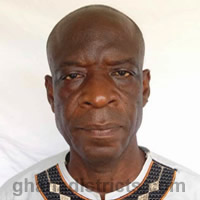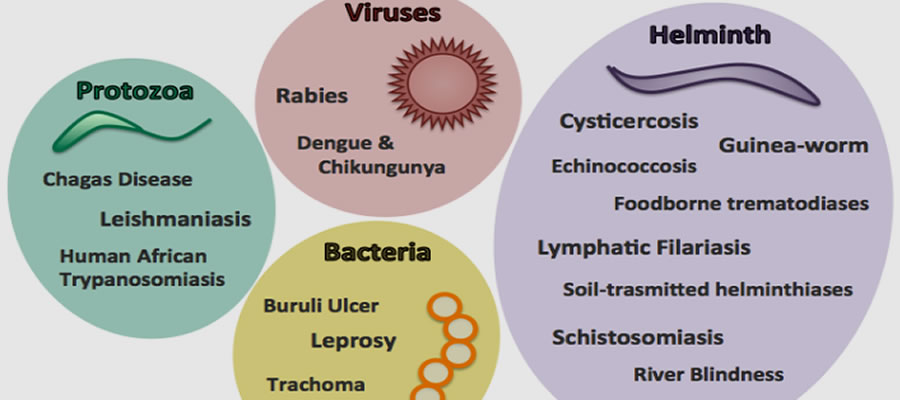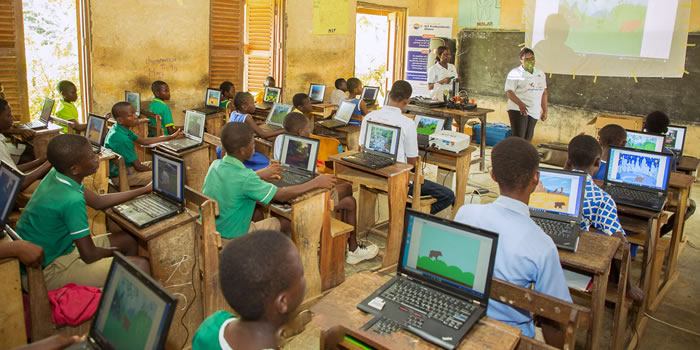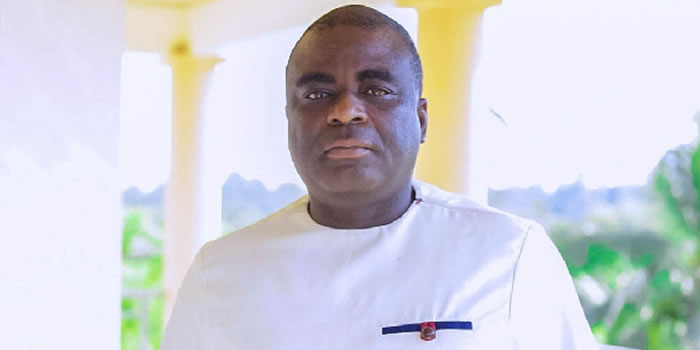

Physical and Natural Environment
Location and Size
The Akyemansa District was carved out of the Birim North District Assembly in 2008 as part of the Government’s decentralization programme to promote effective decentralized governance and speed up the development of the area.
The Akyemansa District is bordered by Birim North Municipal to the north, the Asante Akyem South Municipal, Bekwai Municipal and Adansi South District all in the Ashanti Region to the west, Birim Central Municipal to the south and Atiwa West District and Kwaebibirem Municipal to the east. The district has a very strategic location especially its capital Akyem Ofoase as it is situated among three major commercial towns and a mining town namely Oda, Nkawkaw and New Abirem respectively.
With improved roads linking Ofoase to New Abirem and Oda through Ayirebi, the economy of the district stands a better chance of being improved. Ofoase can be described as a nodal or a confluence town as it is located at the meeting point of the New Abirem- Oda-Nkawkaw roads.
The district has 96 communities with Akyem Ofoase as the administrative capital. It also has four (4) area councils namely; Ofoase, Ayerebi, Akokoaso and, Abenase and thirty-eight (38) Assembly members composed of Twenty-six (26) elected and Twelve (12) appointed.
Below are the District maps of the Akyemansa District Assembly and its Area Council respectively.
Figure 1.1 Akyemansa District Map
Figure 1.2 below is the District Area Council Map
Relief and Drainage
The central part of the district comprising the area stretching from the North to the South of Ofoase, the district capital through Chia, Brenase, and Ayirebi to Otwereso in the south and Akokoaso in the east can be described as very low lying areas. This area rises to a maximum height of 61 metres. The area to the west of Brenase, Otweresothe eastern boundary of the district and the area stretching from Anyinase, Abenase and Adjobue to the southern end of the district has an elevation between 61 metres and 122 metres above sea level.
The district is mostly undulating and mountainous in nature. It is drained mainly by two great and historical rivers, the Pra and Birim Rivers. The Pra River serves as the boundary between the district and the two districts in the Ashanti Region, whiles the Birim River serves as the southern boundary of the district.
Climate
The district lies within the wet semi-equatorial climatic zone that experiences substantial amounts of precipitation. It experiences a double maxima rainfall pattern. The first rainfall season starts from late March to early July and the second season is from mid-August to late October. The amount of rainfall received in the district is between 150cm and 200cm reaching its maximum during the two peak periods of May-June and September - October yearly. Temperatures range between an average minimum of 25.2 degrees Celsius and a maximum of 27.9 degrees Celsius.
The district has a relative humidity of about 55-59 per cent throughout the year. This high amount of rainfall and moderate temperatures has the potential of improving and sustaining agricultural activities in the district. This climatic condition supports the cultivation of food crops and tree crops such as oil palm and cocoa. This has given rise to increasing farming activities in the district. It is sad to note, however, that there is occasional flooding in some communities during the two peak periods of the rainy season.
This climatic condition confirms why the district is mostly described as an agrarian district (Source GSS).
Vegetation
The district lies within the Semi-deciduous forest belt of Ghana comprising different species of economic trees. These trees are highly valuable for the timber industry. The district Is home to 4 forest reserves. These reserves are; Nsuena forest reseve(14.4km sq), Pra-Birim forest reserve(6.0km sq), Kwasi Anyinima forest reserve(1.7km sq). These forest reserves cover a total land area of about 22.4 square kilometres, about 4.9 percent of the total land area. The rapid expansion of the cocoa and oil palm industries in the district is changing the original forest into a secondary type. This type of vegetation with its associated undergrowth prevents the soil from erosion and adds humus to improve the soil’s fertility.
This makes the soil rich in nutrients and supports crop production in the district. The vegetation is also home to many wild life species which provides protein to a portion of the population.
Biodiversity, climate change, green economy and environment in general
Akyemansa District lies within the wet semi equatorial climate zone that experiences substantial amount of rain twice in a year. The first rainfall season start from late march to early July and the second season is from mid – August to late October. The amount of rainfall received in the District is between 150cm and 200cm reaching its maximum during the two peak periods of May – June and September – October. Temperature in the District range between an average minimum of 25.2 degrees Celsius. The relative humidity of the District is about 55 – 59 percent throughout the year.
Akyemansa is endowed with rich natural resources which include land, forest, minerals, rivers, etc. The implementation of some projects and programmes and other human activities such as bush burning, bad agricultural practices and illegal logging have negative impacts on these resources. The negative impacts and other key environmental concerns identified are:
- Indiscriminate/uncontrolled dumping of refuse.
- Water pollution resulting from leaching from refuse disposal sites.
- Dust/air pollution.
- Land degradation as a result of mining activities and erosion.
- Deforestation/depletion of forest reserves caused by illegal logging and bad farming activities.
- Indiscriminate defaecation which sometimes results in epidemics.
- 7. Choked drains/stagnant water which serve as breeding grounds for mosquitoes causing malaria and related diseases.
The district has forest reserves over a total area of 4,520 hectares. In recent years however, these forest reserves have experienced some degradation. The reserved area has degraded by 2,629.19. The causes of the degradation include bad farming practices, plantation farming, settlement development, illegal logging, illegal firewood gathering and other human activities.
The result is the extinction of biodiversity, non-timber forest products and drying up of rivers and other water bodies. In effect, these have contributed to climate change and its impact on communities. These disasters have increased the vulnerability of residents and worsened the poverty situation in the district.
The Disaster Prevention and Management Department through its emergency relief services supported the victims with such relief items as roofing sheets, mattresses, blankets and food items. To ensure sustainable development, environmental issues would be mainstreamed into the plan. Strategic Environmental Assessment (SEA) would be used as a tool to subject planned programmes, projects and activities to sustainability test and measures to mitigate their impacts identified and implemented.
Also, since the district is no exception to the negative impacts of climate change, strategies would be adopted to minimise such negative impacts to the barest minimum and promote green economy. This would be achieved through mainstreaming issues of climate change and green economy and adaptation strategies into the plan to ensure sustainable development in the district.
Natural and man-made disasters
Natural disasters experienced in the district over the past 4 years are mainly rainstorm and flood. Communities hit by rainstorm include Akyem Ofoase, Abenase, Ayiribi, and Akokoaso. Areas affected by floods are Abenase, Ofoase and Ayiribi. A total of 1,279 persons made up of 597 males and 682 females were affected by rainstorm while 136 individuals comprising 69 males and 67 females were affected by the flood. The affected properties are both public and private.
It is worth mentioning that apart from climate change, such human activities as dumping of refuse in drains, sub-standard construction and haphazard development including building in water ways have given impetus to these natural disasters.
Date Created : 1/30/2025 2:59:11 AM








 facebook
facebook
 twitter
twitter
 Youtube
Youtube
 +233 593 831 280
+233 593 831 280 0800 430 430
0800 430 430 GPS: GE-231-4383
GPS: GE-231-4383 info@ghanadistricts.com
info@ghanadistricts.com Box GP1044, Accra, Ghana
Box GP1044, Accra, Ghana